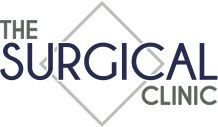It is an exciting time of change and innovation in surgical gastroesophageal reflux disease (GERD) treatment. A weak muscle at the bottom of the esophagus called the lower esophageal sphincter (LES) can allow the backward flow of stomach acid and bile into the esophagus. This can lead to inflammation, pain and damage in the lining for which many patients take antacid medication. With new studies coming out recently about the possible frightening side effects of long-term use of medications like prevacid, prilosec and nexium, new alternatives to chronic drug use are more important than ever.
There are many reasons patients consider surgery as an alternative to medical therapy:
Are you dependent on medication to manage your GERD symptoms?
Do you continue to suffer GERD symptoms while on medication?
Is your GERD affecting your quality of life? (i.e. poor sleep, inability to tolerate certain foods, inability to participate in daily activities)
Are you concerned about the long-term use of drugs to treat your GERD?
Are you concerned about the long-term risks of serious complications from your GERD?
If you are currently treating your GERD with medication and answered “yes” to any of the above questions, please read on.
A traditional Nissen fundoplication can work well for many patients. This is where the stomach is wrapped around the esophagus to make the LES tighter. However, there is an ongoing redefinition of what the surgical options are for people with GERD. Some people fear the change in the anatomy and function that can occur with a Nissen. They are nervous about having a modified diet or not being able to belch or vomit.
A newer alternative is the LINX Reflux Management System. This is a flexible ring of small magnets placed with minimally invasive surgical technique around the LES to help close it and prevent reflux. When food is swallowed, the LINX and LES opens temporarily to allow food and liquid to pass. If pressure is generated in the stomach, the LINX and LES opens and the ability to belch or vomit is preserved. Gassiness and bloating are reduced. The anatomy of the stomach is not altered, therefore patients return to normal diet and activity very quickly, usually within days. Patients who have had the LINX in place for 5 years showed that 85% required no GERD medication, 99% had no reflux of fluid into their chest nor throat, and the majority had an overall improvement in their quality of life (Ganz RA, 2015).
You will need to undergo assessment testing such as xrays and other esophageal evaluation to make sure that you are a candidate for LINX therapy. Insurance companies do pay for the implantation of LINX when it is medically indicated.

